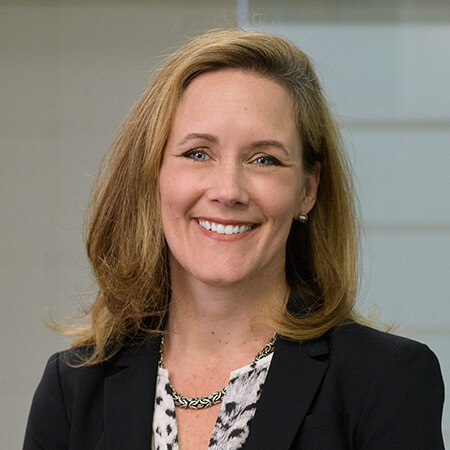This is the year I became “middle aged.” Please send as many jokes on “middle age” as you can find because some humor around the event helps my perspective! According to the PEW Research Center, I join a generation in which nearly half (47%) of adults in their 40s and 50s have a parent age 65 or older and are either raising a young child or financially supporting a grown child (age 18 or older). And about one in seven middle-aged adults (15%) is providing financial support to both an aging parent and a child.
Having an aging parent while still raising or supporting your own children presents certain challenges not faced by other adults – caregiving, financial and emotional support to name just a few. And all the while you are likely juggling a demanding but successful career. According to AARP, there are 66 million people providing financial and emotional care for their children, spouses, and parents. For members of the sandwich generation who are providing financial assistance to an aging parent, the strain of supporting multiple family members can have a major impact on their overall well-being.
Pew Research Social and Demographic Trends reports that looking just at adults in their 40s and 50s who have at least one child age 18 or older, 73% have provided at least some financial help in the past year to at least one child in that category. By contrast, among adults in that same 40s and 50s age group who have a parent age 65 or older, 32% provided financial help to a parent in the past year.
The baby boomers, ages 50 to 68, are also included in this sandwich generation, though not in as great a number as several years ago due to their parents’ passing. As a result, they are gradually aging out of this special category of “sandwich generation,” in essence becoming an “open faced sandwich.” It’s likely that the baby boomers are feeling greater stress about the dual pressures because they are thinking about their own looming retirement. The boomers are caught between the two generations, delaying – or worse, jeopardizing – their own retirement to help their family members. A new study from Sallie Mae revealed that parents are dipping into their retirement funds to pay for their children’s college expenses. If these decisions are made without a strong plan, it can wreak havoc on their retirement, not to mention their stress level.
Careful, strategic planning can alleviate the uncertainty of this dilemma and improve your peace of mind, but there are important considerations:
1. Save, Save, Save. In retirement, regular earned income isn’t consistently flowing to pay down loans, so if you are still heavily in debt, you may need to pull from your assets more aggressively. Prior to your retirement, the obvious tactic is to save as much as possible, reduce your outstanding debts, and budget within reason.
2. Work with an Advisor and Lean on Them. An advisor can help with realistic goal-setting, continuous savings adjustments, and detailed budgeting. Experts can provide an objective eye, anchor people to their goals, and steer savings and investment plans in a healthy, level-headed direction. Regularly evaluate and re-evaluate plans based on realities, not dreams.
The pressures from the top half of the sandwich – the older generation – can be extreme and more challenging than planning around the bottom half of the sandwich – your children. Helping to guide your parents in their money management, which can include dealing with accountants, attorneys, real estate and insurance agents, is a huge undertaking. Your advisor can act as the lynch pin in your professional team, orchestrating events behind the scenes for you and your multiple generations while remaining consistent with the family’s overall strategic plan.
3. Empower the Next Generation. Students can share in the responsibility of the college expenses by holding part-time jobs, taking out their own educational loans, sharing in the debt expense after graduation, and focusing on building skills that are aligned with their career goals.
4. Give a Gift of Financial Security. If it is within your budget, consider making a one-time gift to set your child on the path to financial independence. Give them a lump sum to budget rather than trying to pay off all their debt. This will empower them to cut nonessential expenses and the flexibility to stop living paycheck to paycheck. Based on U.S tax laws for 2015, you can give up to $14,000 per person, or you and your spouse can jointly give up to $28,000 without having to pay taxes on the gift. If your parents are affluent, they can also make gifts to your children under the same guidelines. Additionally, payments can be made directly to an educational institution without those payments diminishing the tax status of other financial gifts.
5. Look for Opportunistic Tax Strategies. For adults supporting their parents, consult with a tax professional to see if caregiver expenses for elderly parents in nursing homes are tax deductible.
Family financial issues can sometimes come with difficult emotions. Many times an outside party, like a professional financial advisor, can help guide an otherwise difficult conversation between family members. With empathy, open communication and careful planning, “sandwichers” can strike a balance and discover ways to support those reliant on them without jeopardizing their own financial future – clearly a benefit to the entire family.
Articles and Commentary
Information provided in written articles are for informational purposes only and should not be considered investment advice. There is a risk of loss from investments in securities, including the risk of loss of principal. The information contained herein reflects Sand Hill Global Advisors' (“SHGA”) views as of the date of publication. Such views are subject to change at any time without notice due to changes in market or economic conditions and may not necessarily come to pass. SHGA does not provide tax or legal advice. To the extent that any material herein concerns tax or legal matters, such information is not intended to be solely relied upon nor used for the purpose of making tax and/or legal decisions without first seeking independent advice from a tax and/or legal professional. SHGA has obtained the information provided herein from various third party sources believed to be reliable but such information is not guaranteed. Certain links in this site connect to other websites maintained by third parties over whom SHGA has no control. SHGA makes no representations as to the accuracy or any other aspect of information contained in other Web Sites. Any forward looking statements or forecasts are based on assumptions and actual results are expected to vary from any such statements or forecasts. No reliance should be placed on any such statements or forecasts when making any investment decision. SHGA is not responsible for the consequences of any decisions or actions taken as a result of information provided in this presentation and does not warrant or guarantee the accuracy or completeness of this information. No part of this material may be (i) copied, photocopied, or duplicated in any form, by any means, or (ii) redistributed without the prior written consent of SHGA.
Video Presentations
All video presentations discuss certain investment products and/or securities and are being provided for informational purposes only, and should not be considered, and is not, investment, financial planning, tax or legal advice; nor is it a recommendation to buy or sell any securities. Investing in securities involves varying degrees of risk, and there can be no assurance that any specific investment will be profitable or suitable for a particular client’s financial situation or risk tolerance. Past performance is not a guarantee of future returns. Individual performance results will vary. The opinions expressed in the video reflect Sand Hill Global Advisor’s (“SHGA”) or Brenda Vingiello’s (as applicable) views as of the date of the video. Such views are subject to change at any point without notice. Any comments, opinions, or recommendations made by any host or other guest not affiliated with SHGA in this video do not necessarily reflect the views of SHGA, and non-SHGA persons appearing in this video do not fall under the supervisory purview of SHGA. You should not treat any opinion expressed by SHGA or Ms. Vingiello as a specific inducement to make a particular investment or follow a particular strategy, but only as an expression of general opinion. Nothing presented herein is or is intended to constitute investment advice, and no investment decision should be made based solely on any information provided on this video. There is a risk of loss from an investment in securities, including the risk of loss of principal. Neither SHGA nor Ms. Vingiello guarantees any specific outcome or profit. Any forward-looking statements or forecasts contained in the video are based on assumptions and actual results may vary from any such statements or forecasts. SHGA or one of its employees may have a position in the securities discussed and may purchase or sell such securities from time to time. Some of the information in this video has been obtained from third party sources. While SHGA believes such third-party information is reliable, SHGA does not guarantee its accuracy, timeliness or completeness. SHGA encourages you to consult with a professional financial advisor prior to making any investment decision.







